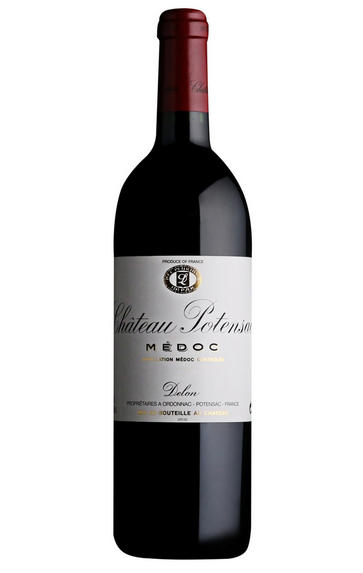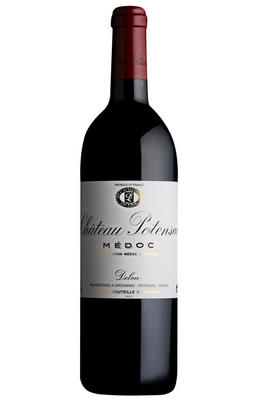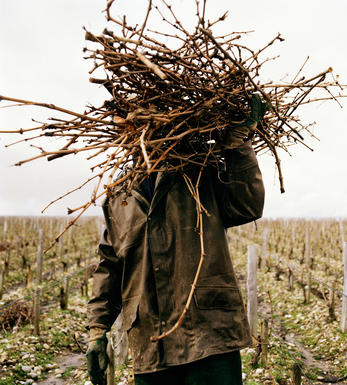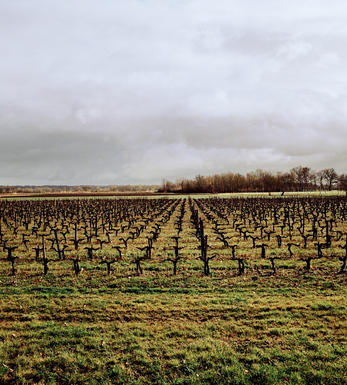
2019 Château Potensac, Médoc, Bordeaux

Critics reviews
About this WINE

Chateau Potensac
Château Potensac is a leading Cru Bourgeois estate located between the villages of Blaignan and Ordonnac in the far north of the Médoc. Potensac is a large property, consisting of 50 hectares of vineyards which are planted on soils rich in alluvial gravel and red clay. The vines (60% Cabernet Sauvignon, 25% Merlot, 15% Cabernet Franc) have a high average age of around 35 years.
The grapes at Potensac are hand-harvested and then vinified in a combination of temperature-controlled, concrete and stainless steel tanks. The wine is matured in small oak barrels (20% new) for 14-16 months.
Quality at Potensac has been on an upward curve ever since Michel Delon (of Léoville-Las-Cases) fame took over the running of the property in the 1970s. He passed away in 2000 and Potensac is now run by his dynamic son Jean-Hubert, with the assistance of maître de chai Bruno Roalland.

Médoc
The Médoc is arguably the most famous red wine district in the world, home to many of the greatest and most renowned names of Bordeaux. It stretches north-west from the city of Bordeaux with the Gironde estuary to the east. The vineyards extend up to eight miles from the river and run for about 50 miles northwards. It is a surprisingly dull landscape, with the best land found on gravelly outcrops.
The most northerly, low-lying vineyards are classified as Bas-Médoc, whilst those on higher ground, closer to the city of Bordeaux, are entitled to the Haut-Médoc appellation. Within that appellation, there are further communal or village appellations, namely Listrac and Moulis, and the four great names of St. Estèphe, Pauillac, St Julien and Margaux. As a rule of thumb, the greatest wines are made at those properties closest to the river.
Recommended Châteaux from the Bas-Médoc: Ch. Le Boscq, Ch. Patache d'Aux, Ch. Potensac, Ch. la Tour de By, Ch. La Tour Carnet, La Tour Haut-Caussan, Ch. La Tour-St-Bonnet, Ch. Verdignan, Ch. Rolland de By
Recommended châteaux from the Haut-Médoc : Ch. La Lagune, Ch. Cantemerle, Ch d’Agassac, Ch. Belgrave, Ch. Camensac, Ch. Charmail, Ch. Cissac, Ch. Citran, Ch. Lanessan, Ch. Liversan, Ch. du Moulin Rouge, Ch. Sociando-Mallet, Ch. La Tour Carnet, Ch. Verdignan, Ch. d’Arche, Ch. Beaumont, Ch. Lamothe-Bergeron

Cabernet Sauvignon Blend
Cabernet Sauvignon lends itself particularly well in blends with Merlot. This is actually the archetypal Bordeaux blend, though in different proportions in the sub-regions and sometimes topped up with Cabernet Franc, Malbec, and Petit Verdot.
In the Médoc and Graves the percentage of Cabernet Sauvignon in the blend can range from 95% (Mouton-Rothschild) to as low as 40%. It is particularly suited to the dry, warm, free- draining, gravel-rich soils and is responsible for the redolent cassis characteristics as well as the depth of colour, tannic structure and pronounced acidity of Médoc wines. However 100% Cabernet Sauvignon wines can be slightly hollow-tasting in the middle palate and Merlot with its generous, fleshy fruit flavours acts as a perfect foil by filling in this cavity.
In St-Emilion and Pomerol, the blends are Merlot dominated as Cabernet Sauvignon can struggle to ripen there - when it is included, it adds structure and body to the wine. Sassicaia is the most famous Bordeaux blend in Italy and has spawned many imitations, whereby the blend is now firmly established in the New World and particularly in California and Australia.


Buying options
Add to wishlist
Description
The 2019 Potensac was harvested from 21 September to 9 October, raised in 34% new oak. Wild strawberry and raspberry preserve aromas make an impact on the nose that storms from the glass, a touch of pencil box in the background. The palate is well balanced with fine grain tannins, plenty of sappy red fruit that segues into darker fruit towards the strict finish. This is a ”correct” Potensac, very linear in style with pleasing length.
2024 - 2044
Neal Martin, vinous.com (June 2020)
wine at a glance
Delivery and quality guarantee